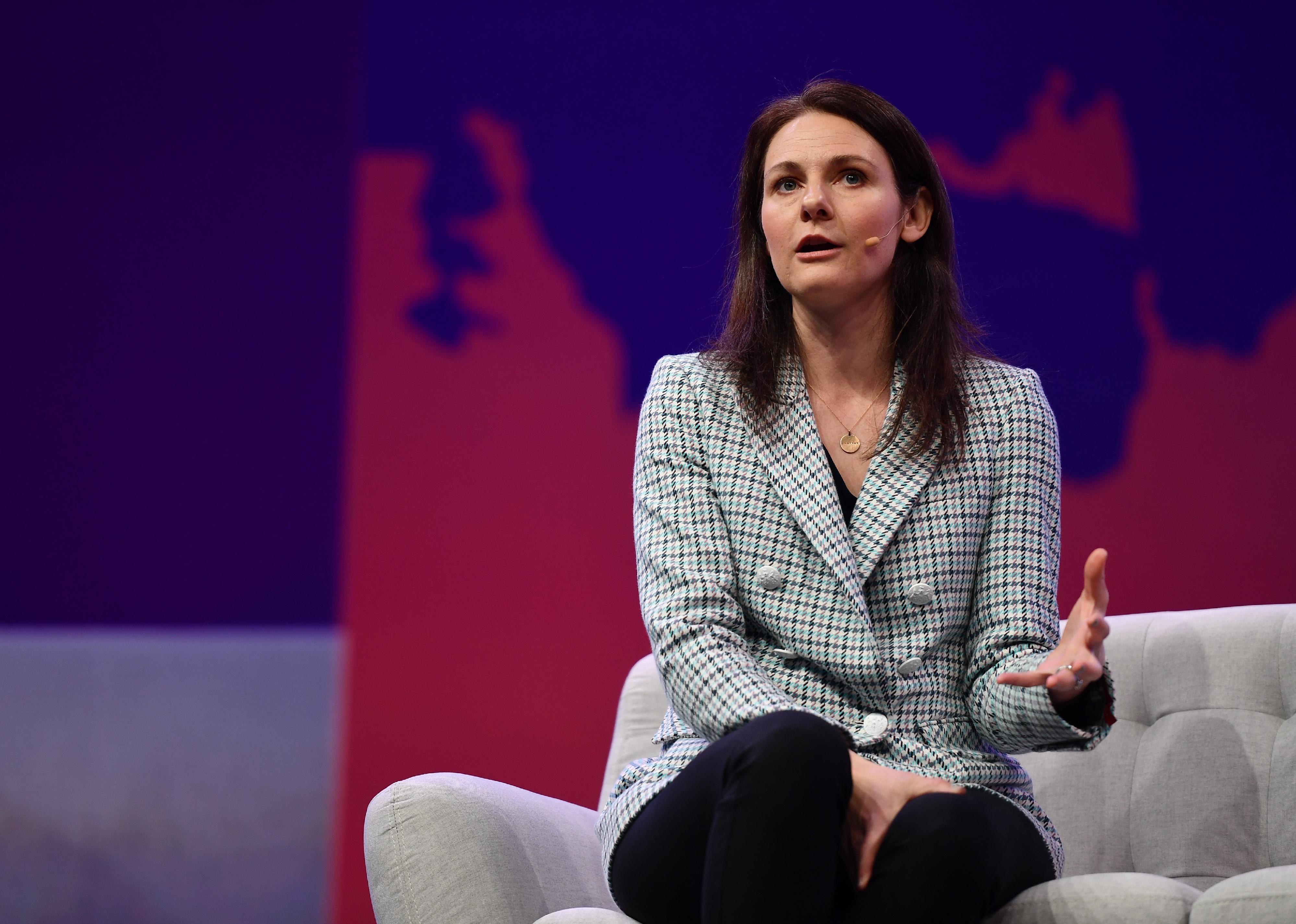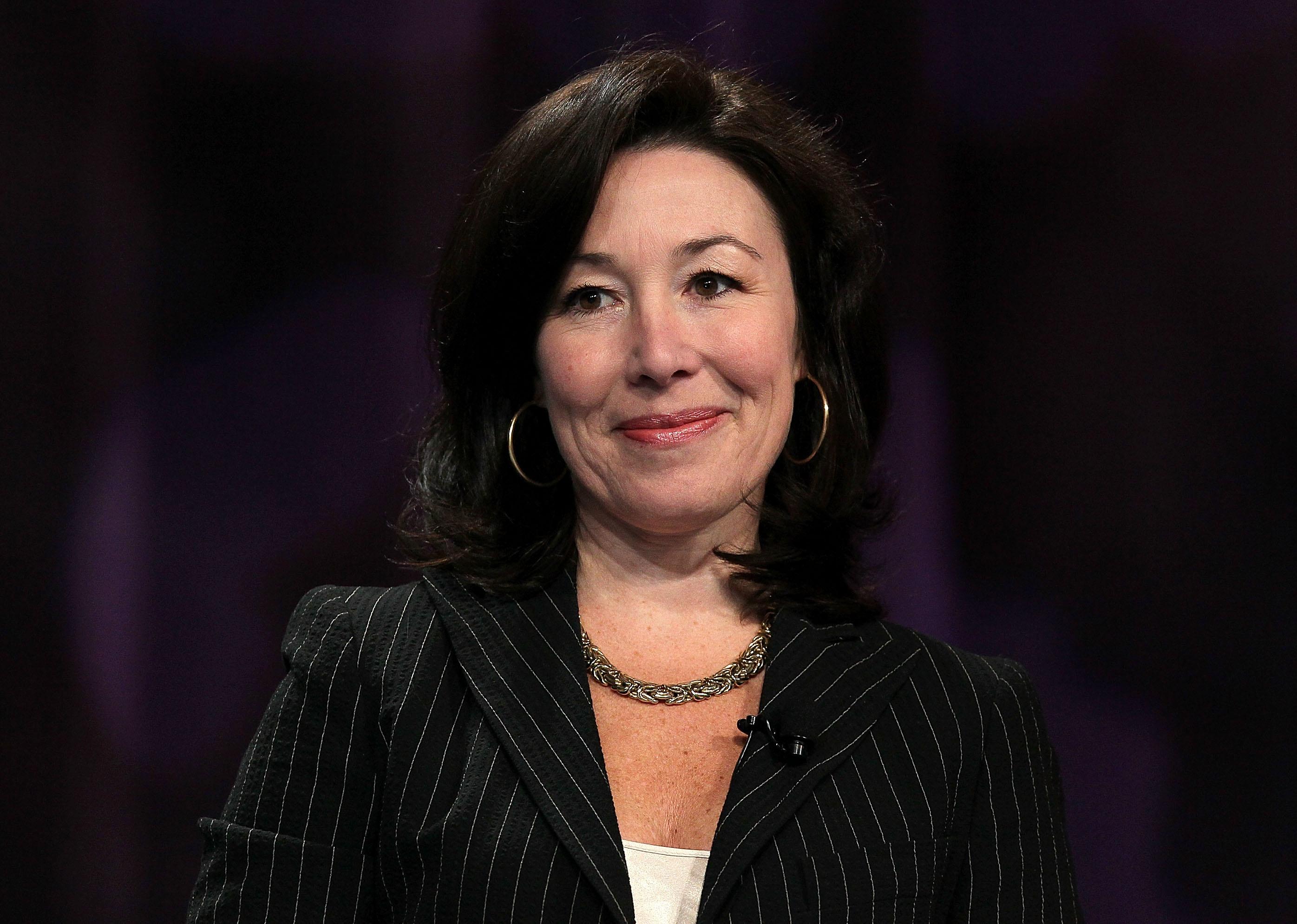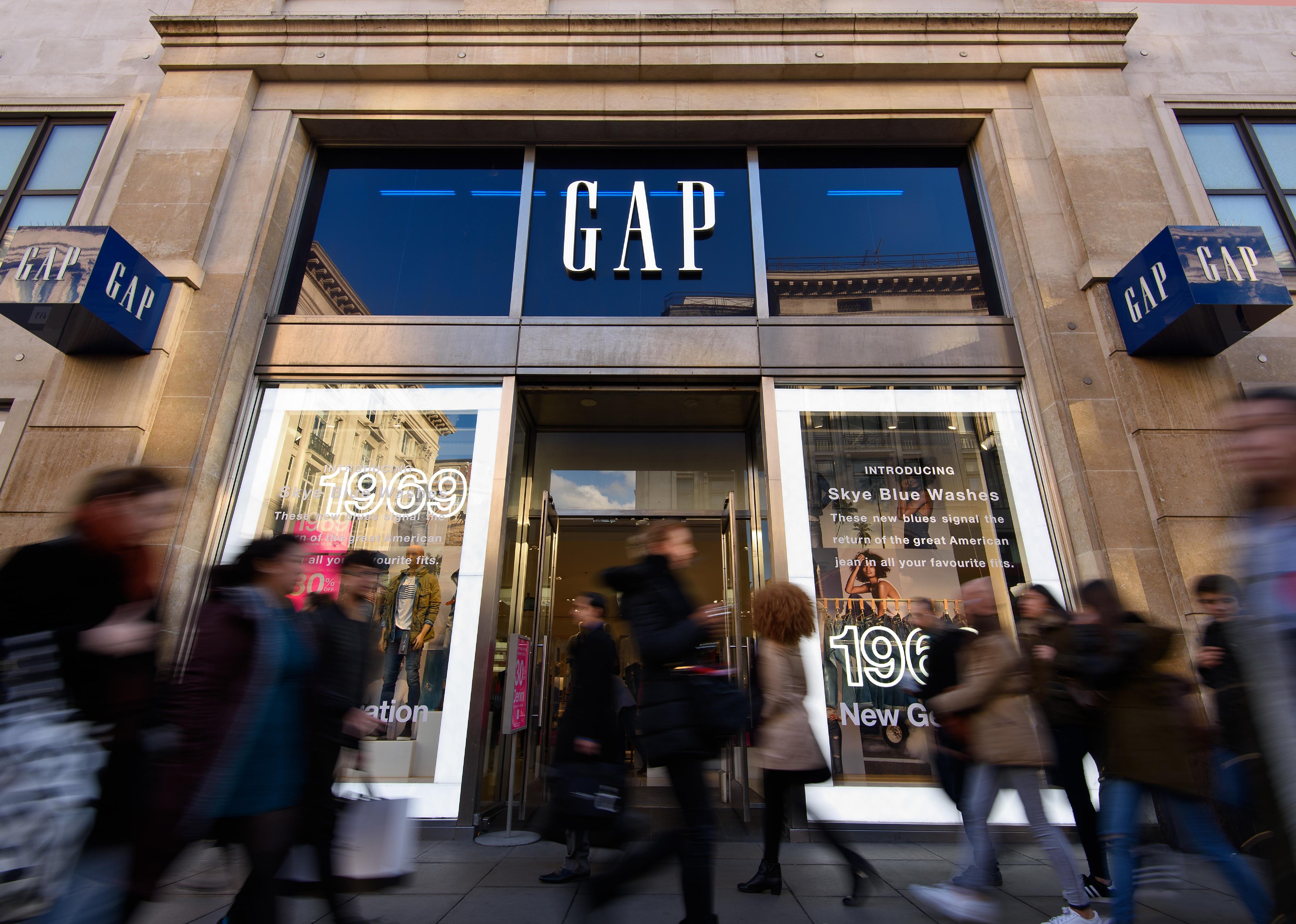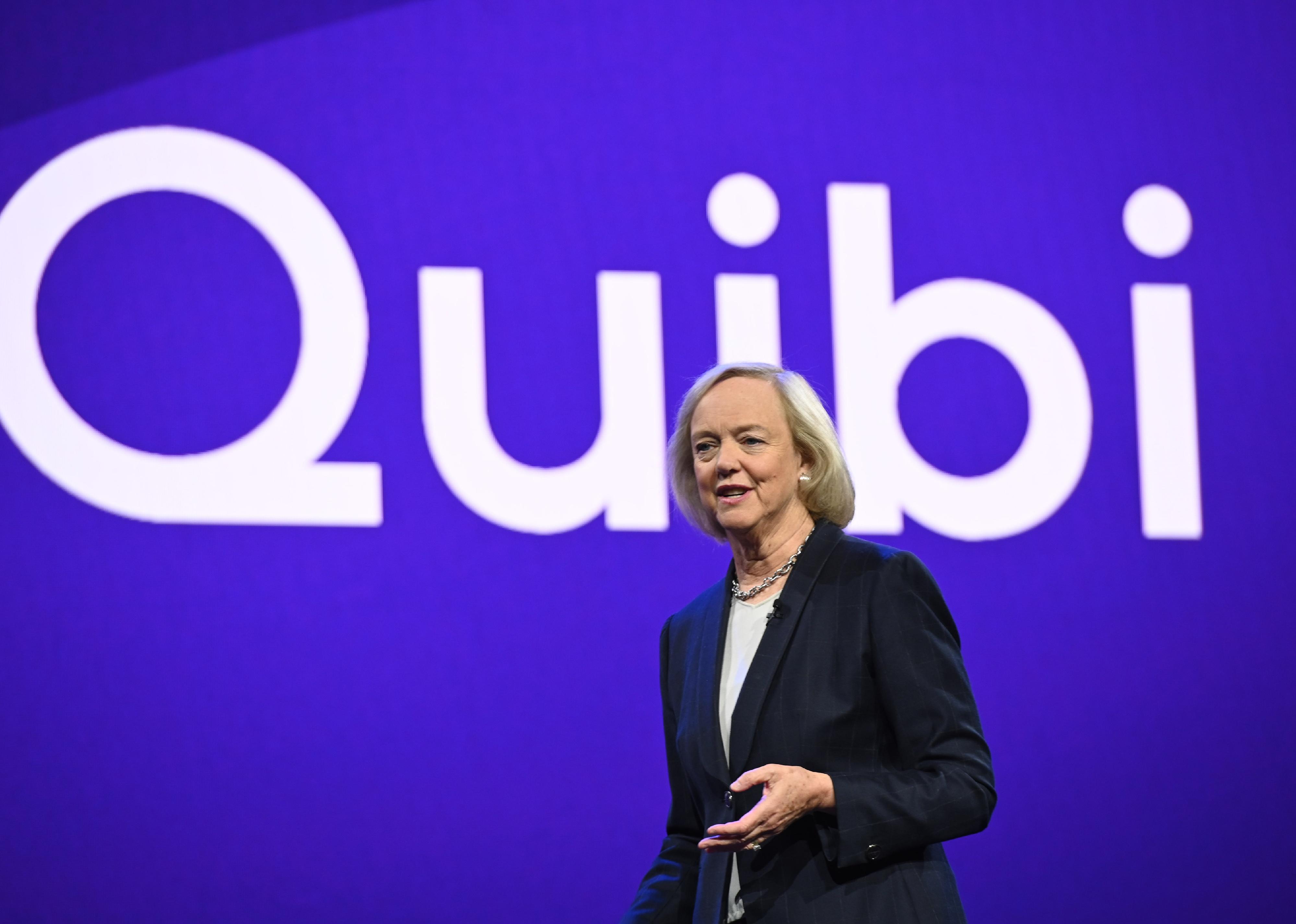Business
Richest self-made women in America
Published
10 months agoon

After several decades of major strides in the American workforce, the number of women in corporate leadership positions or running their own companies has exploded. There are more self-made women millionaires and billionaires today than ever, despite a gender wage gap that in 2023 means women earn $0.77 for every $1 a man makes.
In 2020, there were about 1.24 million businesses owned by women, according to the Census Bureau’s 2021 Annual Business Survey. Women-owned businesses had about $432.1 billion in annual payroll, $1.9 trillion in receipts, and 10.9 million employees.
Stacker collected data from Hurun Research Institute’s 2023 report on the world’s self-made women billionaires. The sum of the wealth of all women on the list is $77.9 billion—about one-third of Elon Musk’s net wealth as of June 13, 2023.
Wealth and age are as of Jan. 16, 2023. If an individual’s shares are held jointly—say, with their spouse—individual shareholdings were broken out where possible. When this wasn’t possible, a 50-50 split was assumed. “Self-made” in this context means wealth that was not inherited. It doesn’t take into account whether inherited wealth or privilege helped in the creation of independent wealth. Please note: The data source presumed a binary gender classification.
![]()
Sam Barnes // Getty Images
#22. Michelle Zatlyn (tie)
– Global rank: #99
– Wealth: $1.1 billion
– Age: 45
– Primary company: Cloudflare
– Primary industry: Cybersecurity
Before being the co-founder and COO of cybersecurity firm Cloudflare, Michelle Zatlyn held leadership positions at Google and Toshiba and launched two successful startups. She earned an MBA from Harvard Business School and was awarded the Dubliner Prize for Entrepreneurship.
SOPA Images // Getty Images
#22. Neerja Sethi (tie)
– Global rank: #99
– Wealth: $1.1 billion
– Age: 69
– Primary company: Syntel
– Primary industry: Enterprise software
Neerja Sethi co-founded the information technology consulting and outsourcing company Syntel in the 1980s. The French IT firm Atos SE bought Syntel in 2018 for $3.4 billion. Sethi received $510 million for her stake, which went a long way in bumping up her net worth.
Dimitrios Kambouris // Getty Images
#20. Rihanna (tie)
– Global rank: #76
– Wealth: $1.4 billion
– Age: 35
– Primary company: Music
– Primary industry: Music
Robyn Rihanna Fenty may be a global pop superstar, but the real origins of her wealth come from her beauty company, Fenty Beauty, which launched in 2017. The company alone quickly catapulted Rihanna’s net worth into another stratosphere. The cosmetics brand is known for creating makeup shades for a wider range of skin tones than other beauty companies offer.
Boston Globe // Getty Images
#20. Elaine Wynn (tie)
– Global rank: #76
– Wealth: $1.4 billion
– Age: 81
– Primary company: Wynn Resort
– Primary industry: Casino
Elaine Wynn co-founded her family’s eponymous resort and casino business, Wynn Resorts. The Las Vegas doyenne is an avid art collector. She told the Wall Street Journal that the price of her 2013 purchase of a Francis Bacon triptych—at $142.4 million, then the most expensive art piece sold at auction—spurred speculation that offended her: Claims a man must have purchased the paintings.
Cozy Home // Shutterstock
#19. Yang Lin
– Global rank: #60
– Wealth: $1.9 billion
– Age: 51
– Primary company: VeSync
– Primary industry: Household appliances
Yang Lin is the founder, chairperson, and CEO of VeSync Co., a small appliance manufacturer. The company is ranked third in U.S. retail sales generated through the behemoth retailer Amazon.
Arturo Holmes // Getty Images
#16. Kim Kardashian (tie)
– Global rank: #53
– Wealth: $2 billion
– Age: 43
– Primary company: KKW Beauty
– Primary industry: Personal care
Kim Kardashian became a household name thanks to her family’s hit TV series “Keeping Up with the Kardashians.” But the reality TV star made her real fortune by branching out into personal care products. The superstar’s SKKN beauty line—formerly known as KKW—was prompted by Kardashian’s self-described desire to give people at-home access to dermatologist-quality skincare without a doctor’s office visit.
Jason LaVeris // Getty Images
#16. Jami Gertz (tie)
– Global rank: #53
– Wealth: $2 billion
– Age: 57
– Primary company: Movies
– Primary industry: Acting
The actor was discovered at age 16 in a talent search for the sitcom “Square Pegs” with Sarah Jessica Parker, which aired in the early 1980s. Since then, she has appeared in numerous television shows, among them the NBC hit “This Is Us,” “The Neighbors,” and “Modern Family” on ABC. She also starred on the cable series “Entourage” and the comedy “Still Standing” for four seasons. Onscreen, she co-starred in “The Lost Boys” and appeared in “Less Than Zero.” She and her husband, billionaire investor Anthony Ressler, own the Atlanta Hawks NBA team and are noted philanthropists through their Ressler Gertz Family Foundation.
Justin Sullivan // Getty Images
#16. Safra Catz (tie)
– Global rank: #53
– Wealth: $2 billion
– Age: 62
– Primary company: Oracle
– Primary industry: Enterprise software
Safra Catz has been the CEO of Oracle since 2014 and has sat on the board of directors since 2001. In addition to her duties at the software and services company, Catz’s net worth also comes from her position as a director of The Walt Disney Company.
Ben Pruchnie // Getty Images
#15. Doris Fisher
– Global rank: #51
– Wealth: $2.1 billion
– Age: 92
– Primary company: GAP
– Primary industry: Apparel & textile products
Doris Fisher co-founded the ubiquitous American clothing retailer Gap, Inc. Fisher founded the brand with her husband when they struggled to find jeans that fit him, following many owners’ pattern of founding companies in response to a need in their own life. Fisher is also a co-founder and major supporter of the Knowledge is Power Program Foundation, which supports public charter schools.
Rob Bayer // Shutterstock
#14. Luo Qianqian
– Global rank: #49
– Wealth: $2.2 billion
– Age: 49
– Primary company: Shanda
– Primary industry: Investment holding company
The co-founder of Shanda Interactive Entertainment Limited, originally an online gaming company, is also known as Chrissy Luo. The company has evolved into a large investment group, of which she is also vice chair and president. She and her husband created the Tianqiao and Chrissy Chen Institute in 2016 to help advance brain science.
ROBYN BECK // Getty Images
#12. Meg Whitman (tie)
– Global rank: #47
– Wealth: $2.3 billion
– Age: 67
– Primary company: eBay
– Primary industry: E-commerce
Meg Whitman spent a decade at the helm of e-commerce pioneer eBay. During Whitman’s tenure as CEO between 1998 and 2008, she grew the company from $5.7 billion to $8 billion in sales. She was subsequently the CEO of Hewlett-Packard, where she oversaw the company’s split into two entities.

Smith Collection/Gado // Getty Images
#12. Alice N. Schwartz (tie)
– Global rank: #47
– Wealth: $2.3 billion
– Age: 97
– Primary company: Bio-Rad Laboratories
– Primary industry: Pharmaceuticals
Alice Schwartz met her husband, David, while studying for her biochemistry degree at the University of California, Berkeley. They started Bio-Rad Laboratories in a Berkeley Quonset hut in 1952 with $720 and eventually expanded into biological discovery and health care research. She worked as a researcher and member of the board of directors. She stepped down from her board duties in 2022 at age 96. Her son, Norman Schwartz, is now president and CEO of the company.
Scott Eisen // Getty Images
#11. Sheryl Sandberg
– Global rank: #38
– Wealth: $2.5 billion
– Age: 54
– Primary company: Facebook
– Primary industry: Media
Sheryl Sandberg may be best known for writing the controversial bestseller “Lean In,” which advised women to take charge of their own careers and destinies. Still, Sandberg’s fortune didn’t come from book sales but from her early involvement and decades of experience as COO of the social networking giant Facebook. She stepped down from the position in June 2022.
SOPA Images // Getty Images
#10. Jayshree Ullal
– Global rank: #34
– Wealth: $2.7 billion
– Age: 62
– Primary company: Arista Networks
– Primary industry: Networking solutions
Jayshree Ullal has served as president and CEO of the computer networking firm Arista since 2008. She owns 5% of Arista’s stock, which contributes significantly to her net worth. Ullal also sits on the board of Snowflake, a public cloud computing company.
Steve Jennings // Getty Images
#9. Oprah Winfrey
– Global rank: #31
– Wealth: $2.9 billion
– Age: 70
– Primary company: Oprah Winfrey Network
– Primary industry: Entertainment
Oprah Winfrey’s eponymous “The Oprah Winfrey Show” made her a household name from 1986 until its final episode in 2011. She went on to found her TV network, Oprah Winfrey Network, which is the source of most of her wealth today.
VCG // Getty Images
#8. Zhang Xi
– Global rank: #28
– Wealth: $3 billion
– Age: 58
– Primary company: SOHO China
– Primary industry: Estate holding
Zhang Xi leads the real estate company SOHO China with her husband. Before working at SOHO China, she cut her teeth at firms such as Goldman Sachs and Travelers Group. The U.S. private equity firm Blackstone Group said in June 2021 that it would buy the majority of SOHO China for more than $3 billion.
Emma McIntyre // Getty Images
#7. Peggy Cherng
– Global rank: #24
– Wealth: $3.1 billion
– Age: 75
– Primary company: Panda Express
– Primary industry: Restaurants
Peggy Cherng is the co-founder of the Chinese fast-food company Panda Express. The company boasts more than 2,000 locations worldwide and nearly $4 billion in sales. In recent years, Cherng has also invested in hotels, including the legendary Waldorf Astoria Hotels & Resorts.
Jason LaVeris // Getty Images
#6. Lynda Resnick
– Global rank: #22
– Wealth: $3.3 billion
– Age: 87
– Primary company: Roll International
– Primary industry: Food processing
Lynda Resnick is vice-chair and co-owner of The Wonderful Company, best known for distributing various health food products, including pistachios and seedless lemons. Known for her marketing prowess, Resnick was nicknamed “POM Queen” after making the company’s POM Wonderful Pomegranate Juice a wild success.
Wesley Hitt // Getty Images
#5. Johnelle Hunt
– Global rank: #19
– Wealth: $4.6 billion
– Age: 84
– Primary company: JB Hunt Transport Services
– Primary industry: Logistics
Johnelle Hunt may be one of the richest women in the world today, but it wasn’t always this way for her. Hunt and her husband had to sell their home and take out loans to start their rice trucking business decades ago. Today, that company has evolved into a multibillion-dollar empire, of which Hunt is the largest individual shareholder.
Gene Sweeney Jr. // Getty Images
#4. Gail Miller
– Global rank: #17
– Wealth: $5.2 billion
– Age: 80
– Primary company: Larry H. Miller
– Primary industry: Automobiles
Gail Miller is the owner and chair of Larry H. Miller. The group of companies has held, at various points, sports teams, vast automotive dealings, and more. Miller is now focused on health care, among other industries she sees as the focus on the future.
RomanR // Shutterstock
#3. Judy Faulkner
– Global rank: #14
– Wealth: $5.8 billion
– Age: 80
– Primary company: Epic Systems
– Primary industry: Health care
Judy Faulkner founded health care software company Epic Systems in 1979 in a Wisconsin basement. It is now the largest company of its kind in the U.S. As the CEO, Faulkner owns 47% of the multibillion-dollar company.
Bill Uhrich // Getty Images
#2. Judy Love
– Global rank: #11
– Wealth: $6 billion
– Age: 86
– Primary company: Love’s Travel Stops & Country Stores
– Primary industry: Multibrand retail
Far from the modern world of technology and Silicon Valley, Judy Love’s empire began with a humble gas station. She and her husband took out a $5,000 loan to open their first gas station in the 1960s. Today, that business has expanded to almost every state in America and does more than $25 billion in annual sales.
Eric Glenn // Shutterstock
#1. Diane Hendricks
– Global rank: #1
– Wealth: $17 billion
– Age: 76
– Primary company: ABC Supply
– Primary industry: Construction materials
Diane Hendricks made her fortune in construction at ABC Supply. But today, the billionaire has turned her attention to post-industrial towns she believes she can revitalize. One of them is Beloit, a Wisconsin town that has fallen on hard times in recent years, which Hendricks hopes can be transformed into a magnet for startups and founders.
Data reporting by Paxtyn Merten. Story editing by Jeff Inglis. Copy editing by Paris Close. Photo selection by Clarese Moller.
Founded in 2017, Stacker combines data analysis with rich editorial context, drawing on authoritative sources and subject matter experts to drive storytelling.
You may like
Business
Cashiers vs. digital ordering: What do people want, and at what cost?
Published
1 week agoon
April 26, 2024
You walk into a fast-food restaurant on your lunch break. You don’t see a cashier but instead a self-service kiosk, a technology that is becoming the new norm in eateries across the country. The kiosks usually offer customers a menu to scroll through and pictures of meals and specials with prompts to select their food and submit their payment in one place.
Self-service kiosks are big business. In fact, the market for self-service products is expected to grow from a $40.3 billion market value in 2022 to $63 billion by 2027, according to a report from BCC Research. Consumers do have mixed opinions about the kiosks, but about 3 out of 5 surveyed consumers reported that they were likely to use self-service kiosks, according to the National Restaurant Association. The technology, while expensive, can boost businesses’ bottom lines in the long run.
Task Group summarized the rise in digital ordering over the past couple of years, its acceptance among customers, and a cost analysis of adopting the technology.
Self-service kiosks—digital machines or display booths—are generally placed in high-traffic areas. They can be used for different reasons, including navigating a store or promoting a product. Interactive self-service kiosks in particular are meant for consumers to place orders with little to no assistance from employees.
The idea of kiosks isn’t new. The concept of self-service was first introduced in the 1880s when the first types of kiosks appeared as vending machines selling items like gum and postcards. In the present age of technology, the trend of self-service has only grown. Restaurants such as McDonald’s and Starbucks have already tried out cashierless technology.
From a business perspective, the kiosks offer a huge upside. While many employers are looking for workers, they’re having a hard time finding staff. In the midst of the COVID-19 pandemic, employers struggled with a severe employee shortage. Since then, the problem has continued. In 2022, the National Restaurant Association reported that 65% of restaurant operators didn’t have enough workers on staff to meet consumer demand. With labor shortages running rampant, cashierless technology could help restaurants fill in for the lack of human employees.
The initial investment for the kiosks can be high. The general cost per kiosk is difficult to quantify, with one manufacturer estimating a range of $1,500 to $20,000 per station. However, with the use of kiosks, restaurants may not need as many cashiers or front-end employees, instead reallocating workers’ time to other tasks.
In May 2022, the hourly mean wage for cashiers who worked in restaurants and other eating establishments was $12.99, according to the Bureau of Labor Statistics. Kiosks could cost less money than a cashier in the long run.
But how do the customers themselves feel about the growing trend? According to a Deloitte survey, 62% of respondents report that they were “somewhat likely” to order from a cashierless restaurant if given the chance to do so. The same survey reported that only 19% of respondents had experience with a cashierless restaurant.
What would it mean for society if restaurants did decide to go completely cashierless? Well, millions of positions would likely no longer be necessary. One report suggests 82% of restaurant positions could be replaced by robots, a prospect making automation appealing to owners who can’t find staff to hire.
Due to the ongoing labor shortage, employers have tried raising employee wages. Papa John’s, Texas Roadhouse, and Chipotle were among the restaurant companies that increased employee pay or offered bonuses in an attempt to hire and retain more workers. Meanwhile, some companies have decided to use technology to perform those jobs instead, so that they wouldn’t have to put effort into hiring or focus their existing staff on other roles.
Story editing by Ashleigh Graf and Jeff Inglis. Copy editing by Tim Bruns.
![]()
Founded in 2017, Stacker combines data analysis with rich editorial context, drawing on authoritative sources and subject matter experts to drive storytelling.

It’s well-documented that the surest, and often best, return on investments comes from playing the long game. But between stocks and real estate, which is the stronger bet?
To find out, financial planning firm Wealth Enhancement Group analyzed data from academic research, Standard and Poor’s, and Nareit to see how real estate compares to stocks as an investment.
Data going back to 1870 shows the well-established power of real estate as a powerful “long-run investment.” From 1870-2015, and after adjusting for inflation, real estate produced an average annual return of 7.05%, compared to 6.89% for equities. These findings, published in the 2019 issue of The Quarterly Journal of Economics, illustrate that stocks can deviate as much as 22% from their average, while housing only spreads out 10%. That’s because despite having comparable returns, stocks are inherently more volatile due to following the whims of the business cycle.
Real estate has inherent benefits, from unlocking cash flow and offering tax breaks to building equity and protecting investors from inflation. Investments here also help to diversify a portfolio, whether via physical properties or a real estate investment trust. Investors can track markets with standard resources that include the S&P CoreLogic Case-Shiller Home Price Indices, which tracks residential real estate prices; the Nareit U.S. Real Estate Index, which gathers data on the real estate investment trust, or REIT, industry; and the S&P 500, which tracks the stocks of 500 of the largest companies in the U.S.
High interest rates and a competitive market dampened the flurry of real-estate investments made in the last four years. The rise in interest rates equates to a bigger borrowing cost for investors, which can spell big reductions in profit margins. That, combined with the risk of high vacancies, difficult tenants, or hidden structural problems, can make real estate investing a less attractive option—especially for first-time investors.
Keep reading to learn more about whether real estate is a good investment today and how it stacks up against the stock market.
![]()

Wealth Enhancement Group
Stocks and housing have both done well
REITs can offer investors the stability of real estate returns without bidding wars or hefty down payments. A hybrid model of stocks and real estate, REITs allow the average person to invest in businesses that finance or own income-generating properties.
REITs delivered slightly better returns than the S&P 500 over the past 20-, 25-, and 50-year blocks. However, in the short term—the last 10 years, for instance—stocks outperformed REITs with a 12% return versus 9.5%, according to data compiled by The Motley Fool investor publication.
Whether a new normal is emerging that stocks will continue to offer higher REITs remains to be seen.
This year, the S&P 500 reached an all-time high, courtesy of investor enthusiasm in speculative tech such as artificial intelligence. However, just seven tech companies, dubbed “The Magnificent 7,” are responsible for an outsized amount of the S&P’s returns last year, creating worry that there may be a tech bubble.
While indexes keep a pulse on investment performance, they don’t always tell the whole story. The Case-Shiller Index only measures housing prices, for example, which leaves out rental income (profit) or maintenance costs (loss) when calculating the return on residential real estate investment.

Wealth Enhancement Group
Housing returns have been strong globally too
Like its American peers, the global real estate market in industrialized nations offers comparable returns to the international stock market.
Over the long term, returns on stocks in industrialized nations is 7%, including dividends, and 7.2% in global real estate, including rental income some investors receive from properties. Investing internationally may have more risk for American buyers, who are less likely to know local rules and regulations in foreign countries; however, global markets may offer opportunities for a higher return. For instance, Portugal’s real estate market is booming due to international visitors deciding to move there for a better quality of life. Portugal’s housing offers a 6.3% return in the long term, versus only 4.3% for its stock market.
For those with deep enough pockets to stay in, investing in housing will almost always bear out as long as the buyer has enough equity to manage unforeseen expenses and wait out vacancies or slumps in the market. Real estate promises to appreciate over the long term, offers an opportunity to collect rent for income, and allows investors to leverage borrowed capital to increase additional returns on investment.
Above all, though, the diversification of assets is the surest way to guarantee a strong return on investments. Spreading investments across different assets increases potential returns and mitigates risk.
Story editing by Nicole Caldwell. Copy editing by Paris Close. Photo selection by Lacy Kerrick.
This story originally appeared on Wealth Enhancement Group and was produced and
distributed in partnership with Stacker Studio.
Founded in 2017, Stacker combines data analysis with rich editorial context, drawing on authoritative sources and subject matter experts to drive storytelling.
Business
5 tech advancements sports venues have added since your last event
Published
2 weeks agoon
April 19, 2024
In today’s digital climate, consuming sports has never been easier. Thanks to a plethora of streaming sites, alternative broadcasts, and advancements to home entertainment systems, the average fan has myriad options to watch and learn about their favorite teams at the touch of a button—all without ever having to leave the couch.
As a result, more and more sports venues have committed to improving and modernizing their facilities and fan experiences to compete with at-home audiences. Consider using mobile ticketing and parking passes, self-service kiosks for entry and ordering food, enhanced video boards, and jumbotrons that supply data analytics and high-definition replays. These innovations and upgrades are meant to draw more revenue and attract various sponsored partners. They also deliver unique and convenient in-person experiences that rival and outmatch traditional ways of enjoying games.
In Los Angeles, the Rams and Chargers’ SoFi Stadium has become the gold standard for football venues. It’s an architectural wonder with closer views, enhanced hospitality, and a translucent roof that cools the stadium’s internal temperature.
The Texas Rangers’ ballpark, Globe Life Field, added field-level suites and lounges that resemble the look and feel of a sports bar. Meanwhile, the Los Angeles Clippers are building a new arena (in addition to retail space, team offices, and an outdoor public plaza) that will seat 18,000 people and feature a fan section called The Wall, which will regulate attire and rooting interest.
It’s no longer acceptable to operate with old-school facilities and technology. Just look at Commanders Field (formerly FedExField), home of the Washington Commanders, which has faced criticism for its faulty barriers, leaking ceilings, poor food options, and long lines. Understandably, the team has been attempting to find a new location to build a state-of-the-art stadium and keep up with the demand for high-end amenities.
As more organizations audit their stadiums and arenas and keep up with technological innovations, Uniqode compiled a list of the latest tech advancements to coax—and keep—fans inside venues.
![]()
Jeff Gritchen/MediaNews Group/Orange County Register // Getty Images
Just Walk Out technology
After successfully installing its first cashierless grocery store in 2020, Amazon has continued to put its tracking technology into practice.
In 2023, the Seahawks incorporated Just Walk Out technology at various merchandise stores throughout Lumen Field, allowing fans to purchase items with a swipe and scan of their palms.
The radio-frequency identification system, which involves overhead cameras and computer vision, is a substitute for cashiers and eliminates long lines.
RFID is now found in a handful of stadiums and arenas nationwide. These stores have already curbed checkout wait times, eliminated theft, and freed up workers to assist shoppers, according to Jon Jenkins, vice president of Just Walk Out tech.
Billie Weiss/Boston Red Sox // Getty Images
Self-serve kiosks
In the same vein as Amazon’s self-scanning technology, self-serve kiosks have become a more integrated part of professional stadiums and arenas over the last few years. Some of these function as top-tier vending machines with canned beers and nonalcoholic drinks, shuffling lines quicker with virtual bartenders capable of spinning cocktails and mixed drinks.
The kiosks extend past beverages, as many college and professional venues have started using them to scan printed and digital tickets for more efficient entrance. It’s an effort to cut down lines and limit the more tedious aspects of in-person attendance, and it’s led various competing kiosk brands to provide their specific conveniences.
Kyle Rivas // Getty Images
Mobile ordering
Is there anything worse than navigating the concourse for food and alcohol and subsequently missing a go-ahead home run, clutch double play, or diving catch?
Within the last few years, more stadiums have eliminated those worries thanks to contactless mobile ordering. Fans can select food and drink items online on their phones to be delivered right to their seats. Nearly half of consumers said mobile app ordering would influence them to make more restaurant purchases, according to a 2020 study at PYMNTS. Another study showed a 22% increase in order size.
Many venues, including Yankee Stadium, have taken notice and now offer personalized deliveries in certain sections and established mobile order pick-up zones throughout the ballpark.
Darrian Traynor // Getty Images
QR codes at seats
Need to remember a player’s name? Want to look up an opponent’s statistics at halftime? The team at Digital Seat Media has you covered.
Thus far, the company has added seat tags to more than 50 venues—including two NFL stadiums—with QR codes to promote more engagement with the product on the field. After scanning the code, fans can access augmented reality features, look up rosters and scores, participate in sponsorship integrations, and answer fan polls on the mobile platform.
Boris Streubel/Getty Images for DFL // Getty Images
Real-time data analytics and generative AI
As more venues look to reinvigorate the in-stadium experience, some have started using generative artificial intelligence and real-time data analytics. Though not used widely yet, generative AI tools can create new content—text, imagery, or music—in conjunction with the game, providing updates, instant replays, and location-based dining suggestions
Last year, the Masters golf tournament even began including AI score projections in its mobile app. Real-time data is streamlining various stadium pitfalls, allowing operation managers to monitor staffing issues at busy food spots, adjust parking flows, and alert custodians to dirty or damaged bathrooms. The data also helps with security measures. Open up an app at a venue like the Honda Center in Anaheim, California, and report safety issues or belligerent fans to help better target disruptions and preserve an enjoyable experience.
Story editing by Nicole Caldwell. Copy editing by Paris Close. Photo selection by Lacy Kerrick.
This story originally appeared on Uniqode and was produced and
distributed in partnership with Stacker Studio.
Founded in 2017, Stacker combines data analysis with rich editorial context, drawing on authoritative sources and subject matter experts to drive storytelling.
Featured
-

 Business4 months ago
Business4 months agoSkill-based hiring is the answer to labour shortages, BCG report finds
-

 Business5 months ago
Business5 months agomesh conference goes deep on AI, with experts focusing in on training, ethics, and risk
-

 Events4 months ago
Events4 months agoThe Northern Lights Technology & Innovation Forum comes to Calgary next month
-

 People4 months ago
People4 months agoHow connected technologies trim rework and boost worker safety in hands-on industries
-

 Events5 months ago
Events5 months agoNavigating innovation, privacy policies, and diversity in a tech-driven world




























